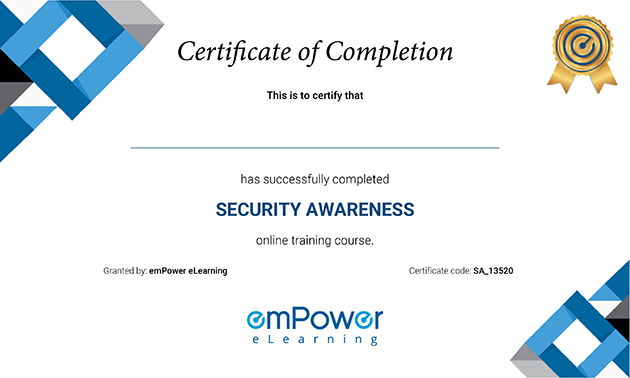Complete Phishing Awareness Training & Course
Empower Yourself with Phishing Awareness Training: Strengthen Your Defenses Today!

Our Client

































What is Phishing Awareness Training
Phishing awareness training should be essential for everyone. It’s the most troubling cyber attack that you’ll ever face. Using social engineering tactics, it can fool you into revealing your social security number, passwords, and credit card details. Unguarded Internet users can end up installing ransomware and spyware on their phones and computers. In 2022, more than 500 million phishing attacks were reported with losses crossing $52,000,000 in the U.S.
Phishing awareness training can help you defend yourself from phishing. The training would help you become aware of what phishing is and how it occurs. We’ll help you understand what social engineering is, and how criminals use it to design phishing attacks. You’ll go through different examples of phishing and how to protect against them. We’ll also look at some of the unconventional forms of phishing.
The phishing awareness training will present you with multiple scenarios, and share how to confront them. You’ll also learn to deal with situations where you have been victimized by phishing attacks.
Course Description
| Category | Information Security |
| Course Name | Fight Phishing |
| Duration | 30 mins |
| Certificate Included | Yes |
| Languages | English |
| Course Type | Interactive online training |
| Narration | Yes |
| Format | LM-light, SCORM 1.2 |
| Supported Devices | Desktop/Laptop, Tablet, Phone |
| Last Updated | June 30, 2021 |
What you’ll learn
- What is phishing?
- What forms phishing attacks might take, including spear phishing
- Other social engineering attacks that you need to look out for
- How to protect yourself and your organization
- How to react if a phishing attack has tricked you
Curriculum
- What is Phishing?
- How does a phishing attack work?
- Example 1 – Your account must be reactivated
- Example 2 – Help us to help you
- Example 3 – Update your account details
- More examples of phishing
- Is online banking safe?
- How NOT to get phished?
- Additional precautions against phishing
- What is Spear phishing?
- Spear phishing – Why hack the computer if I can hack the person?
- Why is spear phishing so common?
- Examples of spear phishing
- How to avoid spear phishing?
- Other social engineering attacks
- Social engineering and the Nigerian (or 419) scam
- Social engineering and Phony charities and causes
- Social engineering and Money mules
- Social engineering and Installing malware
- How to react if you’ve been phished?
- Other measures against phishing
Who Should Attend?
Phishing training is important for all employees within an organization, regardless of their roles or positions. This includes,
- All on-premise employees
- Remote workers
- Temporary and Contract Workers
- Partners and Vendors
- New Hires
Why emPower
100s of customers
- 14+ Years of experience in working with small to large businesses from different industries
- 95% customer retention
Customer Experience
- 24x7 dedicated support and toll free number
- 99%+ guaranteed uptime
Extremely Cost-effective
- As low as $0.99/user/yr
- We will match or better the price of your current LMS
Effective Courses
- Each course is 20-40 min long to ensure engagement with quizzes and certificate
- SCORM 1.2 Compliant
Implementation
- No setup costs
- We deploy your customized solution in less than 48 hours
Our Achievements
Here you can review some statistics about our Education Center
Related Courses
Start Your Certification Course Today
Phishing is a form of electronic fraud – usually done via emails – to acquire sensitive information such as your social security number, credit card details, or account username and password.
To carry out the fraud, the criminals would masquerade themselves as a person or organization that you trust and trick you into sharing the information with them.
The trick involves using fake websites, bogus call centers, and installing malware that can steal sensitive information from your computer.
Once compromised, your details would be used for many crimes, including credit card purchases, employment scams, or withdrawing money from your bank.
To trick you into sharing your personal information, criminals can resort to using fake websites that look similar to the ones you use regularly.
Using various tricks, the fake website would coerce you into re-submitting your personal information to the website. Unfortunately, if you fall into the trap, your personal information will get shared with the criminals running the site.
Some criminals resort to using fake pop-up ads as well. Clicking the ad would lead you to their phishing website, which would offer discounts and prizes upon sharing your personal information.
The best safeguard against phishing websites is to check for the lock icon in the address bar. In addition, never share sensitive information on websites without SSL or “https”.
You can report a phishing email to (The anti-Phishing Working Group (APWG) by emailing them. APWG works with US-CERT to protect people from phishing scams. You can also report the email to the Federal Trade Commission (FTC).
Other agencies you can contact include econsumer.gov for international scams, the social security administrator’s Inspector General, and Treasury Inspector General for Tax Administration (TIGTA) for IRS imposters.
In general, to keep your email account safe, you should use your email provider’s inbuilt ‘report phishing’ features to report suspicious emails. The email provider would analyze the email, and ensure that such email doesn’t come to your inbox again.
Similarly, if you’re using a corporate email account, you must also inform your IT security department. Do NOT forward the email. Some corporate emails allow users to report emails as phishing via their inbox directly as well. Check with your IT for more details.

